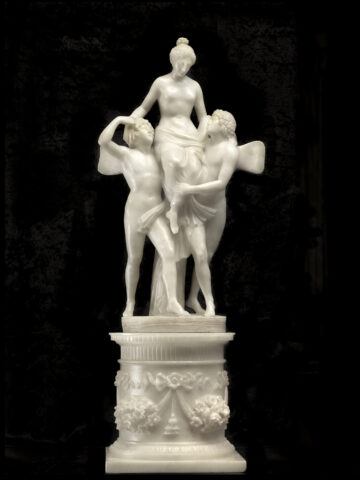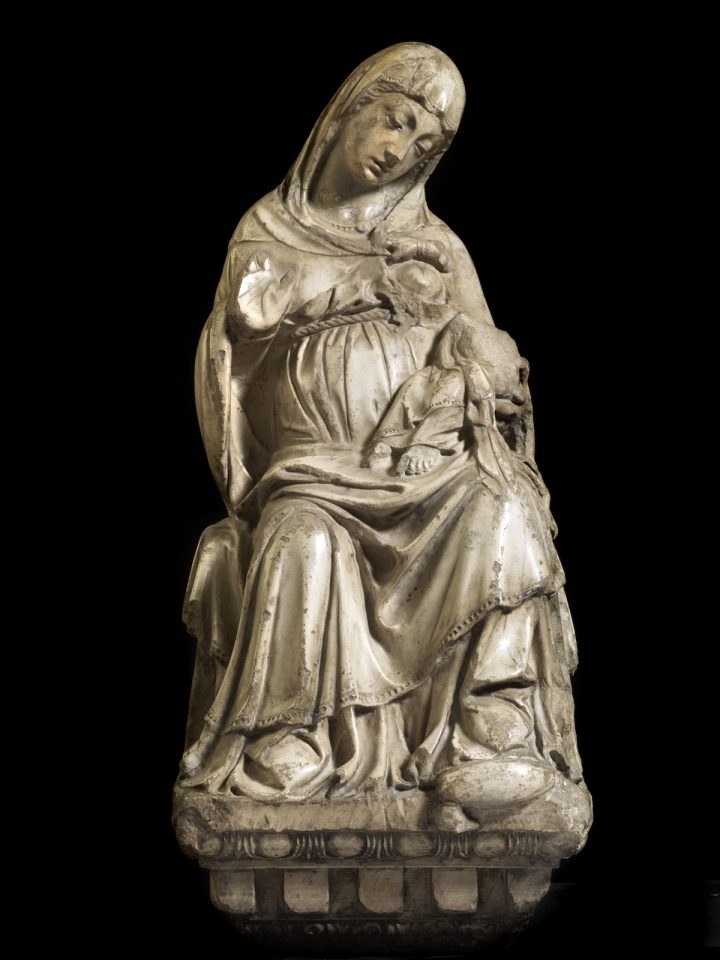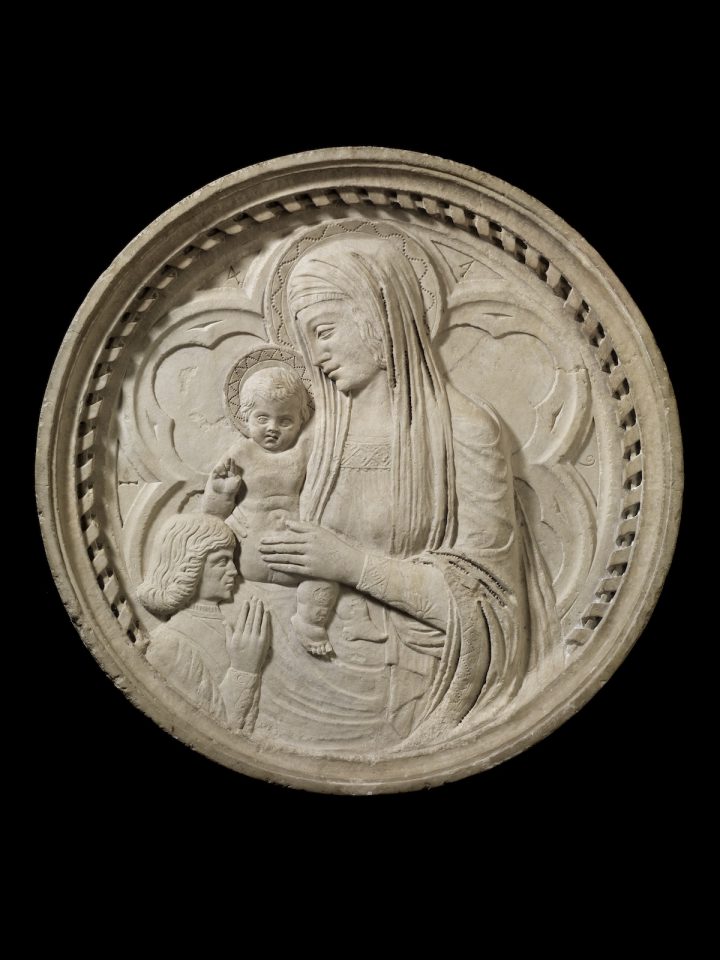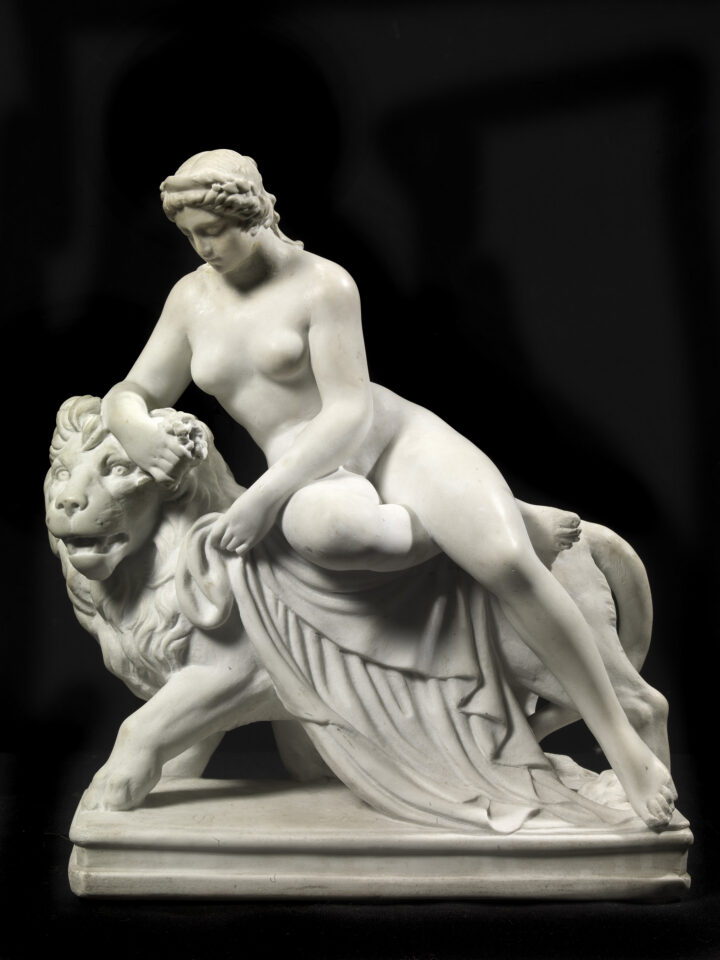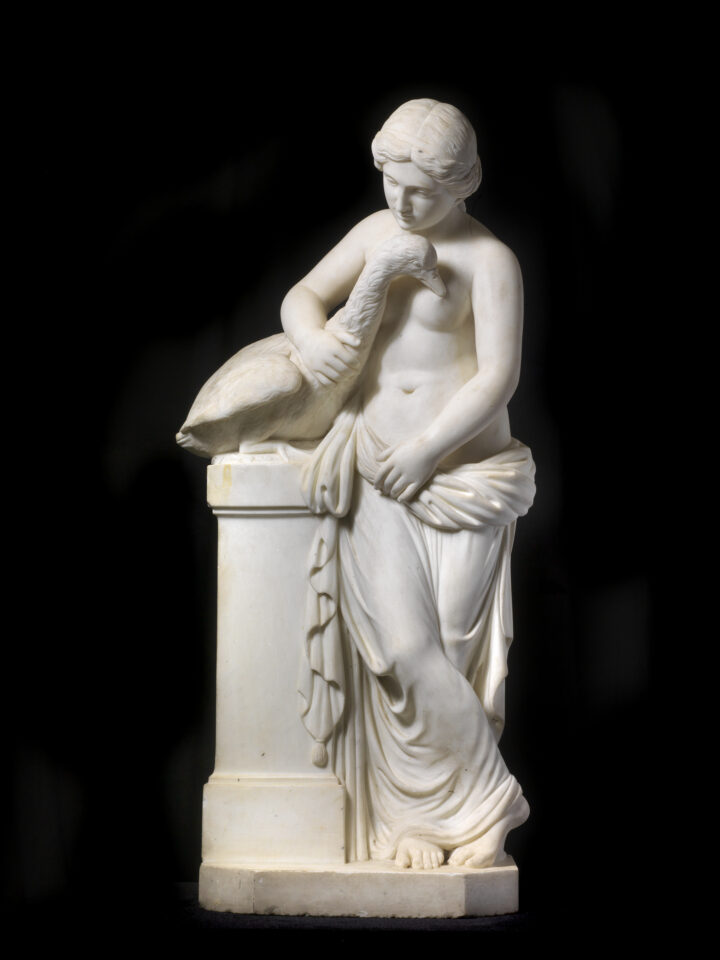GIOVANNI INSOM, ATTRIBUITO A
Casez, 1775 – Florence, 1855
Psyche Carried by the Zephyrs
Sculpted alabaster, cm 68 height
This refined pair of sculptures in the round is made of alabaster, a type of translucent stone widely used in the 18th century for decorations and small ornamental objects.
Our graceful sculptural compositions can be traced back to the mastery of the Trentino sculptor Giovanni Insom, who was renowned for his extensive reproductions of ancient marble and alabaster sculptures.
Active in the first half of the 19th century, his art was not limited to Trentino, but also reached Florence, where the artist taught at the Accademia di Belle Arti and had the celebrated sculptor Lorenzo Bartolini among his pupils.
The carved wooden anatomical figure at the Hermitage in St Petersburg bears vivid testimony to his skill in working with other materials as well.
Upon observing our sculptures, it is possible to recognise Cupid and Psyche, whose long and troubled story is narrated by the Roman historian Apuleius in his Metamorphoses.
Here we see a particular moment in the story of the two lovers, rarely depicted in the figurative arts: Psyche rescued from the top of a cliff and carried by the Zephyrs to a pleasant meadow, where she falls asleep, and Cupid led by the Graces to his palace, where the two lovers will finally meet. The Welsh sculptor John Gibson (Conwy, 1760 – Rome, 1866) had already chosen to depict this episode, following in the footsteps of his master, Antonio Canova (Possagno, 1757 – Venice, 1822), who had previously tackled Apuleius’ tale, but depicted the moment when the two lovers kissed.

